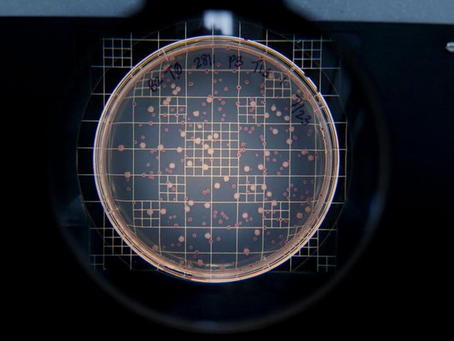top of page
MOSTLY MICROBES AND INFECTIOUS DISEASES
Welcome to Mostly Microbes and Infectious Diseases. David Ojcius posts newspaper and journal articles in the broad field of microbiology.

Search


Researchers found evidence of a coronavirus epidemic that broke out >20,000 years ago in East Asia.
#coronavirus #COVID19 #Asia #evolution Genomes of >2,500 people show interaction with coronaviruses, which left genetic imprints on the...
David Ojcius
Jun 27, 20212 min read


Trained viruses prove more effective at fighting antibiotic resistance
#antibioticresistance #phages #bacteriophages #microbiology #evolution Scientists trained phages to lead to greater bacterial suppression...
David Ojcius
Jun 8, 20212 min read


Luring bacteria into an evolutionary trap to reduce treatment resistance
#immunology #Salmonella #vaccines #evolution #microbiology Researchers succeeded in developing an oral vaccine against Salmonella that...
David Ojcius
Jun 6, 20212 min read


The mysterious microbes that gave rise to complex life
#microbiology #evolution #Archaea are more than just oddball lifeforms that thrive in unusual places: they turn out to be quite...
David Ojcius
May 19, 20211 min read


DNA’s Histone Spools Hint at How Complex Cells Evolved
#evolution #biology #molecularbiology #microbiology Histones, as linchpins of the apparatus for gene regulation, play a role in almost...
David Ojcius
May 16, 20212 min read


New Species Fills Billion-Year Gap in Evolution of Cyanobacteria
#microbiology #evolution Researchers have isolated a new species of #cyanobacteria from a tropical hornwort plant found in Panama. The...
David Ojcius
May 14, 20211 min read


Genetic admixture in the South Pacific: From Denisovans to the human immune response
#immunology #evolution Scientists have looked at understudied human populations from the South Pacific, which are severely affected by a...
David Ojcius
Apr 15, 20211 min read


A microbial marriage reminiscent of mitochondrial evolution
Researchers describe a bacterial endosymbiont that they discovered living in a ciliate. Although associations between these types of...
David Ojcius
Mar 3, 20211 min read


Plant evolution driven by interactions with symbiotic and pathogenic microbes
Plant #evolution driven by interactions with symbiotic and pathogenic microbes Mosses, liverworts, and hornworts have layered innovation...
David Ojcius
Feb 21, 20211 min read


New understanding about ancient branch of life on Earth
All life on Earth can be divided into three broad domains—archaea, bacteria, and eukaryotes. Humans, other animals, plants, fungus—right...
David Ojcius
Dec 17, 20201 min read
Home: Blog2
Home: Subscribe

Home: Contact
bottom of page






